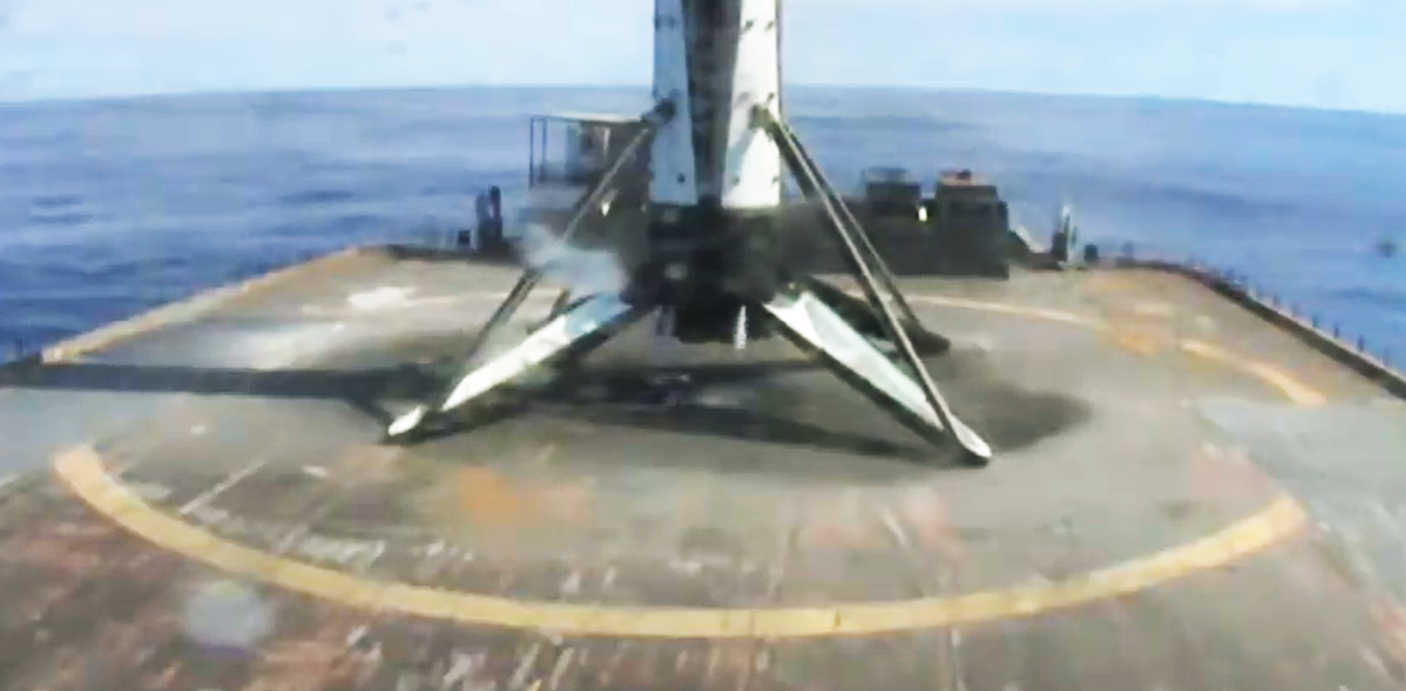
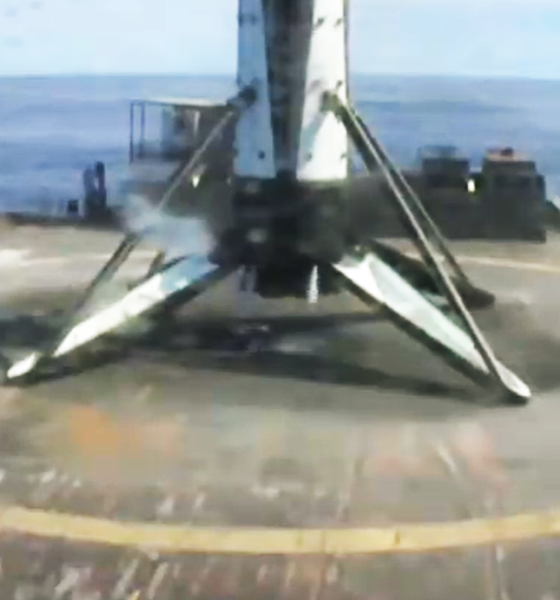
News
SpaceX Falcon 9 rocket ties turnaround record, nears 1000 Starlink satellites launched
SpaceX has successfully completed its 14th Starlink v1.0 launch less than a year after operational flights began and simultaneously tied its own world record for orbital-class rocket turnaround.
On the heels of an unusual 48-hour delay SpaceX says it used to double check that a minor Falcon 9 second stage camera issue was not indicative of deeper flaws, the rocket ultimately lifted off at 11:31 am EDT (15:31 UTC) from SpaceX’s Cape Canaveral Air Force Station (CCAFS) LC-40 pad. As usual, 60 Starlink v1.0 satellites – weighing some 16 metric tons (~35,000 lb) – were loaded inside the payload fairing installed atop Falcon 9’s expendable second stage.
Two and a half minutes after liftoff, Falcon 9 booster B1060 shut down its nine Merlin 1D engines and detached from the second stage, immediately flipping itself around to face those engines towards its landing target. The second stage ignited its Merlin Vacuum (MVac) engine seconds later, burning towards an initial low Earth parking orbit for a six minutes. Thirty seconds prior to second engine cutoff (SECO-1), booster B1060 ignited its center Merlin 1D engine and slowed itself to a bullseye landing aboard drone ship Just Read The Instructions – tying the SpaceX-held world-record for orbital-class rocket turnaround.
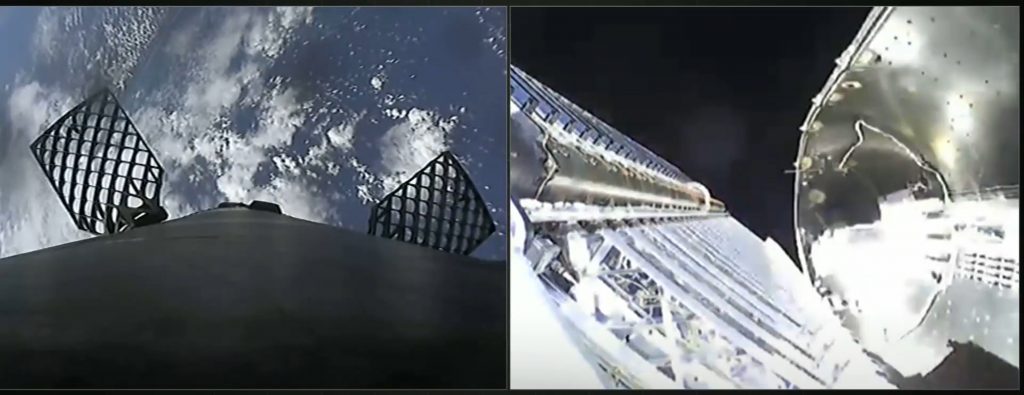
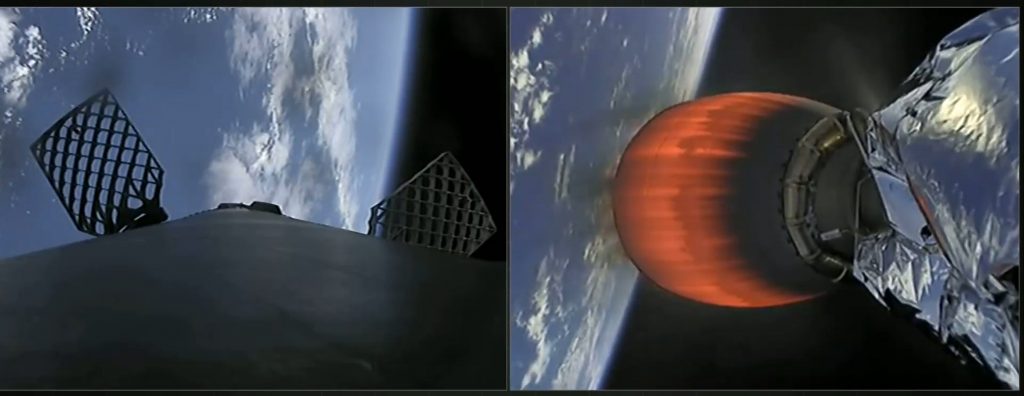
For reusable rockets, that turnaround record refers to the time between two orbital-class launches with the same vehicle – in this case, Falcon 9 booster B1060. The SpaceX rocket managed to launch two separate Starlink missions – Starlink-11 and Starlink-14 – just 51 days, 2 hours, and 45 minutes, narrowly missing Falcon 9 booster B1058’s record by a measly 37 minutes.
Had SpaceX managed to avoid three days of delays, Starlink-14 would have seen B1060 break B1058’s record by three days. Ultimately, the competition is almost entirely symbolic, given that SpaceX effectively has a monopoly over reusable orbital-class launch capabilities and will almost inevitably continue to beat its own records as it grows to become the world’s foremost expert in reusable rocketry.
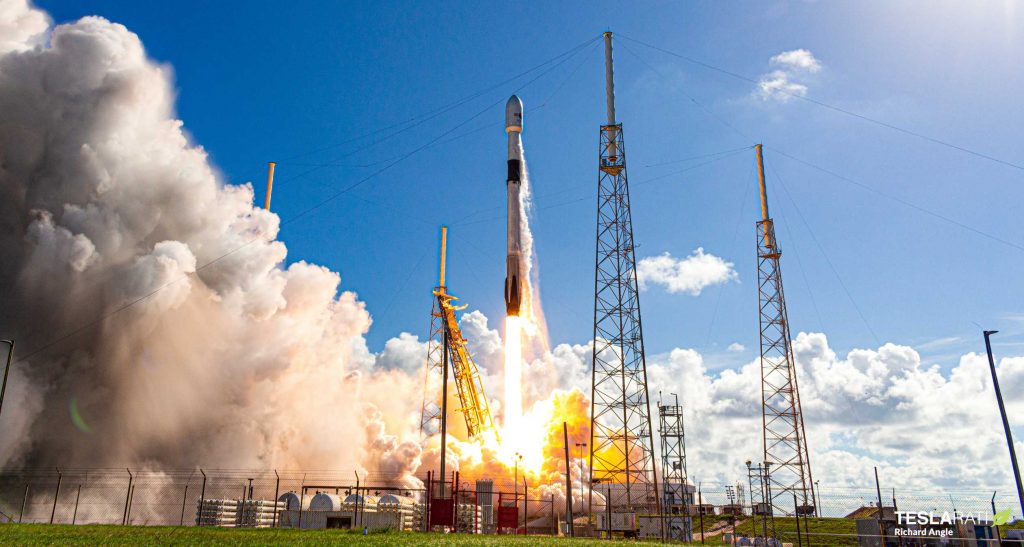
B1060’s Starlink-14 launch and landing represents the 63rd time SpaceX has successfully landed a Falcon booster, as well as the 55th orbital launch to include a successful booster landing and 43rd mission to use a flight-proven rocket. Including Falcon 1 and Falcon Heavy, Starlink-14 also marked SpaceX’s 100th successful launch since the company’s first success in September 2008.
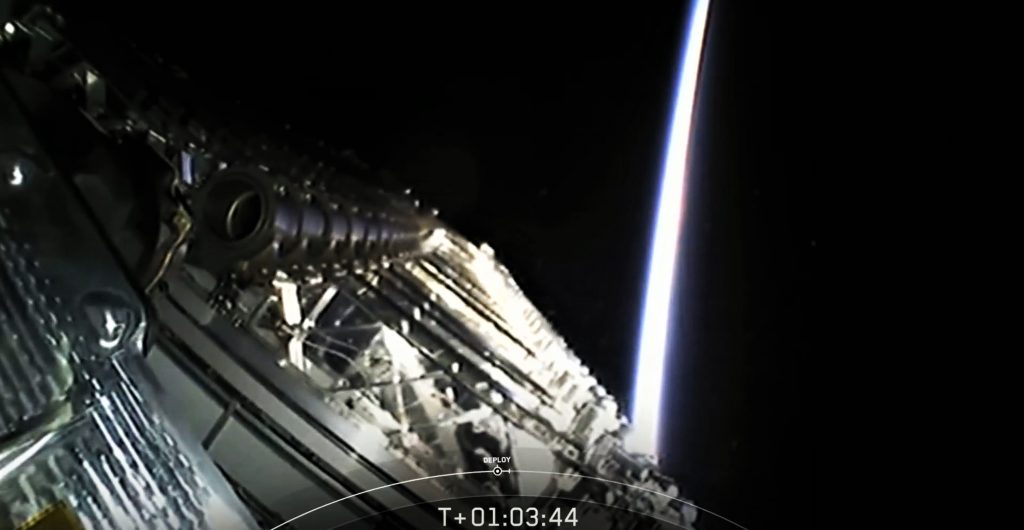
If all 60 Starlink-14 satellites manage to boost up to their final orbits, SpaceX will soon have a constellation of more than 800 operational communications satellites – perhaps just three launches away from crossing the 1000-satellite mark. Typically averaging a boost of 6 km (3.7 mi) in orbital altitude every day, each batch of Starlink satellites takes approximately 30-60 days to reach their operational orbits and join the rest of the fleet. SpaceX has already indicated that the first public Starlink beta tests will begin to rollout once Starlink-13 satellites are operational – a milestone they will likely cross in November.

Elon Musk
Elon Musk’s X will start using a Tesla-like software update strategy
The initiative seems designed to accelerate updates to the social media platform, while maintaining maximum transparency.

Elon Musk’s social media platform X will adopt a Tesla-esque approach to software updates for its algorithm.
The initiative seems designed to accelerate updates to the social media platform, while maintaining maximum transparency.
X’s updates to its updates
As per Musk in a post on X, the social media company will be making a new algorithm to determine what organic and advertising posts are recommended to users. These updates would then be repeated every four weeks.
“We will make the new 𝕏 algorithm, including all code used to determine what organic and advertising posts are recommended to users, open source in 7 days. This will be repeated every 4 weeks, with comprehensive developer notes, to help you understand what changed,” Musk wrote in his post.
The initiative somewhat mirrors Tesla’s over-the-air update model, where vehicle software is regularly refined and pushed to users with detailed release notes. This should allow users to better understand the details of X’s every update and foster a healthy feedback loop for the social media platform.
xAI and X
X, formerly Twitter, has been acquired by Elon Musk’s artificial intelligence startup, xAI last year. Since then, xAI has seen a rapid rise in valuation. Following the company’s the company’s upsized $20 billion Series E funding round, estimates now suggest that xAI is worth tens about $230 to $235 billion. That’s several times larger than Tesla when Elon Musk received his controversial 2018 CEO Performance Award.
As per xAI, the Series E funding round attracted a diverse group of investors, including Valor Equity Partners, Stepstone Group, Fidelity Management & Research Company, Qatar Investment Authority, MGX, and Baron Capital Group, among others. Strategic partners NVIDIA and Cisco Investments also continued support for building the world’s largest GPU clusters.
News
Tesla FSD Supervised wins MotorTrend’s Best Driver Assistance Award
The decision marks a notable reversal for the publication from prior years, with judges citing major real-world improvements that pushed Tesla’s latest FSD software ahead of every competing ADAS system.

Tesla’s Full Self-Driving (Supervised) system has been named the best driver-assistance technology on the market, earning top honors at the 2026 MotorTrend Best Tech Awards.
The decision marks a notable reversal for the publication from prior years, with judges citing major real-world improvements that pushed Tesla’s latest FSD software ahead of every competing ADAS system. And it wasn’t even close.
MotorTrend reverses course
MotorTrend awarded Tesla FSD (Supervised) its 2026 Best Tech Driver Assistance title after extensive testing of the latest v14 software. The publication acknowledged that it had previously criticized earlier versions of FSD for erratic behavior and near-miss incidents, ultimately favoring rivals such as GM’s Super Cruise in earlier evaluations.
According to MotorTrend, the newest iteration of FSD resolved many of those shortcomings. Testers said v14 showed far smoother behavior in complex urban scenarios, including unprotected left turns, traffic circles, emergency vehicles, and dense city streets. While the system still requires constant driver supervision, judges concluded that no other advanced driver-assistance system currently matches its breadth of capability.
Unlike rival systems that rely on combinations of cameras, radar, lidar, and mapped highways, Tesla’s FSD operates using a camera-only approach and is capable of driving on city streets, rural roads, and freeways. MotorTrend stated that pure utility, the ability to handle nearly all road types, ultimately separated FSD from competitors like Ford BlueCruise, GM Super Cruise, and BMW’s Highway Assistant.
High cost and high capability
MotorTrend also addressed FSD’s pricing, which remains significantly higher than rival systems. Tesla currently charges $8,000 for a one-time purchase or $99 per month for a subscription, compared with far lower upfront and subscription costs from other automakers. The publication noted that the premium is justified given FSD’s unmatched scope and continuous software evolution.
Safety remained a central focus of the evaluation. While testers reported collision-free operation over thousands of miles, they noted ongoing concerns around FSD’s configurable driving modes, including options that allow aggressive driving and speeds beyond posted limits. MotorTrend emphasized that, like all Level 2 systems, FSD still depends on a fully attentive human driver at all times.
Despite those caveats, the publication concluded that Tesla’s rapid software progress fundamentally reshaped the competitive landscape. For drivers seeking the most capable hands-on driver-assistance system available today, MotorTrend concluded Tesla FSD (Supervised) now stands alone at the top.
News
Elon Musk’s Grokipedia surges to 5.6M articles, almost 79% of English Wikipedia
The explosive growth marks a major milestone for the AI-powered online encyclopedia, which was launched by Elon Musk’s xAI just months ago.

Elon Musk’s Grokipedia has grown to an impressive 5,615,201 articles as of today, closing in on 79% of the English Wikipedia’s current total of 7,119,376 articles.
The explosive growth marks a major milestone for the AI-powered online encyclopedia, which was launched by Elon Musk’s xAI just months ago. Needless to say, it would only be a matter of time before Grokipedia exceeds English Wikipedia in sheer volume.
Grokipedia’s rapid growth
xAI’s vision for Grokipedia emphasizes neutrality, while Grok’s reasoning capabilities allow for fast drafting and fact-checking. When Elon Musk announced the initiative in late September 2025, he noted that Grokipedia would be an improvement to Wikipedia because it would be designed to avoid bias.
At the time, Musk noted that Grokipedia “is a necessary step towards the xAI goal of understanding the Universe.”
Grokipedia was launched in late October, and while xAI was careful to list it only as Version 0.1 at the time, the online encyclopedia immediately earned praise. Wikipedia co-founder Larry Sanger highlighted the project’s innovative approach, noting how it leverages AI to fill knowledge gaps and enable rapid updates. Netizens also observed how Grokipedia tends to present articles in a more objective manner compared to Wikipedia, which is edited by humans.
Elon Musk’s ambitious plans
With 5,615,201 total articles, Grokipedia has now grown to almost 79% of English Wikipedia’s article base. This is incredibly quick, though Grokipedia remains text-only for now. xAI, for its part, has now updated the online encyclopedia’s iteration to v0.2.
Elon Musk has shared bold ideas for Grokipedia, including sending a record of the entire knowledge base to space as part of xAI’s mission to preserve and expand human understanding. At some point, Musk stated that Grokipedia will be renamed to Encyclopedia Galactica, and it will be sent to the cosmos.
“When Grokipedia is good enough (long way to go), we will change the name to Encyclopedia Galactica. It will be an open source distillation of all knowledge, including audio, images and video. Join xAI to help build the sci-fi version of the Library of Alexandria!” Musk wrote, adding in a later post that “Copies will be etched in stone and sent to the Moon, Mars and beyond. This time, it will not be lost.”








